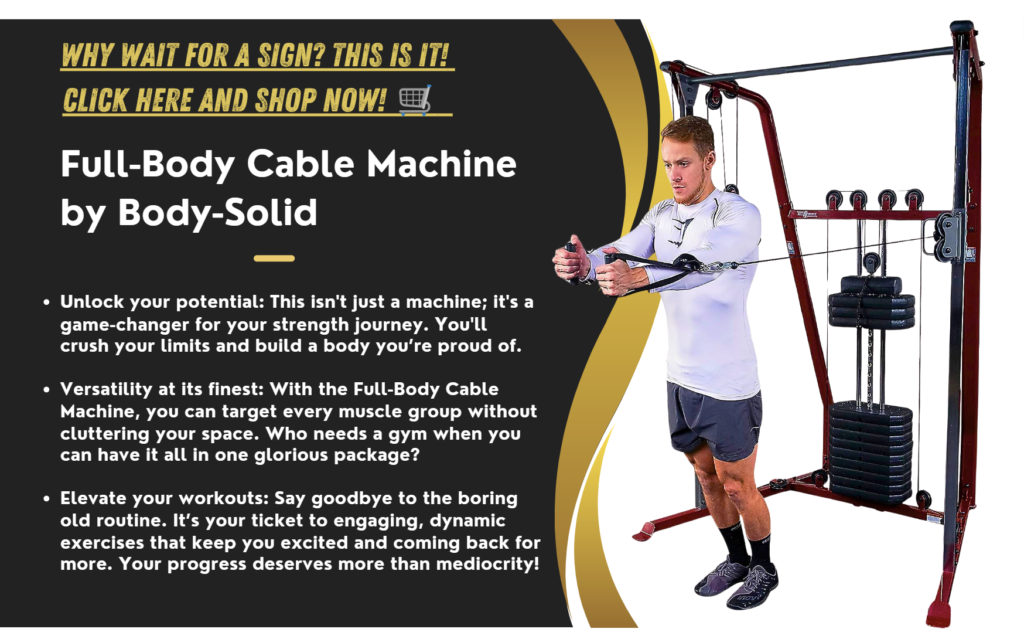Ignite Your Workout: Fun Lateral Deltoid Exercises Await
You ever wonder why those sneaky lateral deltoids get the least love in your workout routine? It’s like showing up to a barbecue and ignoring the ribs while only eating coleslaw—sure, the coleslaw’s great, but where’s the flavor? Those lateral deltoids are the hidden gems of shoulder workouts, often overlooked but absolutely essential for that well-rounded look and feel. Get ready to pump up those shoulders and unleash the beast mode within; we’re diving into exercises that will have those deltoids singing praises and begging for more! So, grab your weights and let’s make those shoulders snappier than your best friend’s comebacks during a roast!
🏋️♂️ Lateral Deltoid Exercises
-
- Exercise Types
- Dumbbell Lateral Raises: Classic exercise targeting the lateral deltoids.
- Cable Lateral Raises: Provides constant tension throughout the movement.
- Resistance Band Lateral Raises: Great for home workouts and varying resistance.
- Arnold Press: Combines shoulder press with a twist for a full shoulder workout.
- Upright Rows: Engages the deltoids and traps, promoting overall shoulder strength.
- Exercise Techniques
- Proper Form: Keep your back straight and avoid swinging your arms.
- Range of Motion: Lift weights to shoulder height for optimal engagement.
- Tempo and Reps: Use a controlled tempo; aim for 8-12 reps per set.
- Breathing Techniques: Exhale while lifting, inhale while lowering.
- Exercise Variations
- Single-Arm Lateral Raises: Focuses on one side at a time for improved muscle balance.
- Seated Lateral Raises: Reduces momentum and isolates the deltoids.
- Bent-Over Lateral Raises: Targets the rear deltoids and upper back.
- Machine Lateral Raises: Provides stable support for focused muscle activation.
- Equipment Needed
- Dumbbells: Essential for various lateral raise exercises.
- Cables: Ideal for continuous resistance during workouts.
- Resistance Bands: Versatile and portable for strength training.
- Exercise Machines: Provides guided movements and stability.
- Exercise Types
- Benefits of Lateral Deltoid Exercises
- Shoulder Width and Strength: Builds broader shoulders and enhances strength.
- Improved Shoulder Stability: Strengthens the muscles supporting the shoulder joint.
- Enhanced Upper Body Aesthetics: Contributes to a well-defined physique.
- Increased Functional Strength: Supports various daily activities and sports performance.
- Common Mistakes
- Using Too Much Weight: Can lead to poor form and increased risk of injury.
- Poor Posture: Compromises effectiveness and may strain the back.
- Incorrect Range of Motion: Limits muscle engagement and growth.
- Overtraining: Can cause muscle fatigue and increase injury risk.
- Exercise Programs
- Beginner Programs: Focus on mastering form with lighter weights.
- Intermediate Programs: Introduce more complex variations and increased intensity.
- Advanced Programs: Incorporate supersets and higher volume for muscle growth.
- Hybrid Strength and Cardio Programs: Combine deltoid exercises with cardiovascular workouts for overall fitness.
- Recovery and Maintenance
- Stretching and Flexibility: Incorporate shoulder stretches to enhance flexibility and recovery.
- Proper Nutrition: Support muscle repair with a balanced diet rich in protein.
- Rest and Recovery: Allow adequate recovery time between workouts to prevent overtraining.
- Top Exercise Brands and Equipment
- Bowflex: Known for versatile home gym equipment.
- NordicTrack: Offers high-quality resistance machines.
- Life Fitness: Provides durable and effective gym machines.
- ProForm: Features innovative equipment for comprehensive workouts.
- Safety Tips
- Warm-Up and Cool-Down: Essential to prepare muscles and prevent injuries.
- Avoiding Shoulder Strain: Use proper form and avoid excessive weights.
- Using Correct Form: Ensures effectiveness and reduces the risk of injury.
Dive into Q&A
🏋️♂️ Q1: What’s the best way to ensure proper form during lateral raises? 💪 A1: Keep your shoulders down and back, and lift weights to shoulder height without swinging.
🏋️♂️ Q2: How can I vary my lateral deltoid workout? 💪 A2: Incorporate different exercises like single-arm or seated raises, and use various equipment.
🏋️♂️ Q3: Can I perform these exercises if I have shoulder issues? 💪 A3: Consult with a healthcare provider; focus on low weights and proper form to avoid strain.
🏋️♂️ Q4: What’s a common mistake to avoid with lateral raises? 💪 A4: Using too much weight, which can lead to poor form and shoulder strain.
🏋️♂️ Q5: How do I integrate lateral deltoid exercises into a full workout routine? 💪 A5: Combine with compound movements and cardio for balanced strength and conditioning.
🏋️♂️ Q6: How often should I train my deltoids? 💪 A6: Aim for 1-2 times per week, allowing rest between sessions to avoid overtraining.
🏋️♂️ Q7: What’s the ideal number of sets and reps for muscle growth? 💪 A7: Perform 3-4 sets of 8-12 reps for effective muscle building.
🏋️♂️ Q8: Can I use bodyweight exercises for deltoid training? 💪 A8: Yes, exercises like pike push-ups can effectively target the deltoids.
🏋️♂️ Q9: Are there any specific warm-up exercises for deltoid training? 💪 A9: Shoulder circles and light resistance band exercises can prepare the deltoids for more intense work.
🏋️♂️ Q10: How can I track progress with lateral deltoid exercises? 💪 A10: Monitor increases in weight, reps, and overall shoulder definition over time.
